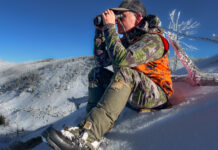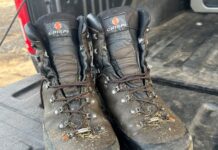
Tech-Lite Hunter Review
by Luke Moffat, Rokslide Prostaff
It’s no question that finding a boot that works for your feet is vital for the backcountry hunter. Simply said, your feet are your mobility. If you can’t walk due to bad boots you can’t hunt. Finding a quality boot that fits your individual feet should be the highest priority for anyone hunting the backcountry.
I have always thought the brand name on the boot isn’t nearly as important as how it fits your feet. So long as your feet agree, that is the first and foremost priority. I have used the Lowa Hunter GTX model since 2007, and find that they work very well and agree with my feet. In late 2013, Lathrop & Sons introduced the Lowa Tech-Light Hunter. Hoping Lowa had used the Hunter GTX as a guide when they designed the Tech-Lights, I bit the bullet and ordered up a pair. My hopes were that the new design would provide a little weight savings over my previous boots, while still offering the stiffness and support I would need for hunting mountain goats and Dall sheep.
When the boots arrived in December of 2013, they fit like a glove out of the box. On my preliminary hikes, I found no hot spots. I was planning a Mountain Goat hunt on Kodiak Island in February, so this came as a relief. Another prerequisite for a pair of mountain hunting boots for me is they must be compatible with a set of instep crampons. Crampons are a must when hunting slippery icy frozen slopes or slick vegetation, both of which were expected on a winter mountain goat hunt. I have tried 3 different types of crampons with the Tech-Light Hunters, and all seem to fit well when mounted on these boots.
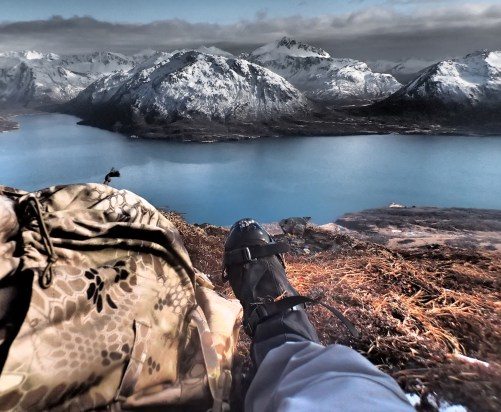
As far as stiffness and support, I found the 5mm thick full shank to give me plenty of support even when side hilling with a load of mountain goat and camp on my back. I have tried full shank boots before that were so stiff that it made for walking long approaches on flat terrain tiresome. The Tech-Light Hunters seem to have a good balance between offering enough support to allow for good purchases with the side of the boot into the mountain while side hilling, but also not fatiguing on longer approaches.
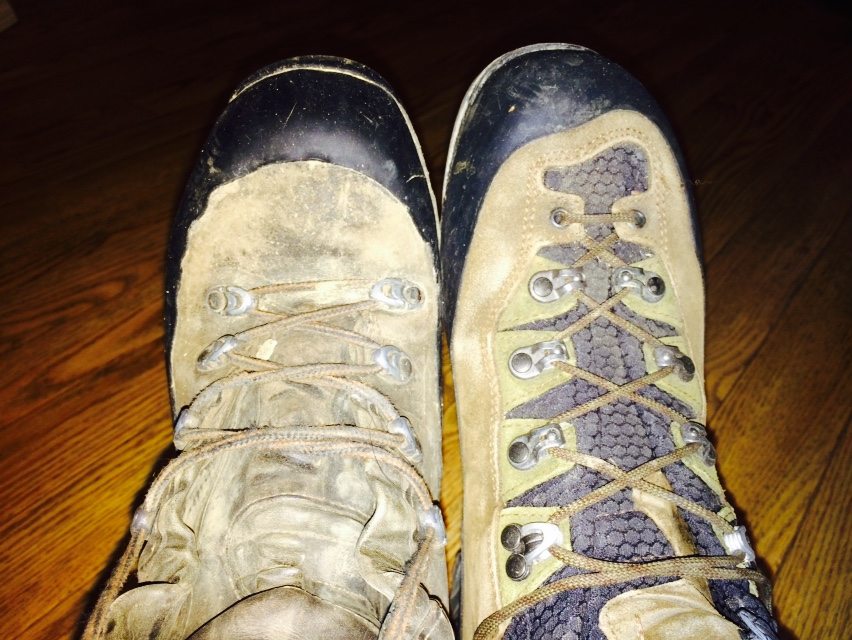
Hunter GTX on the left, Tech Lite Hunter on the right
Another feature I was glad that Lowa worked into this boot was the fact that they kept a full rubber rand. As you can see in the picture above, the rand isn’t quite as full as what you find on the Hunter GTX model, however it still seems to provide a lot of protection for the front of the boot. Often times boot makers forgo a full rand on lightweight boots to save weight. The fact that Lowa sacrificed some weight savings in order to provide a more robust boot was a plus to me.
The biggest difference for me between the Tech-Light Hunter and Hunter GTX was the the weight difference. I wear a size 10 US, and found the Tech-Light Hunter boot weighed in at 29.2 ounces/boot or 3.65 pounds per per (not bad for the stiffness it provides) compared to my old Hunter GTX at 4.8 pounds per pair in the same size.
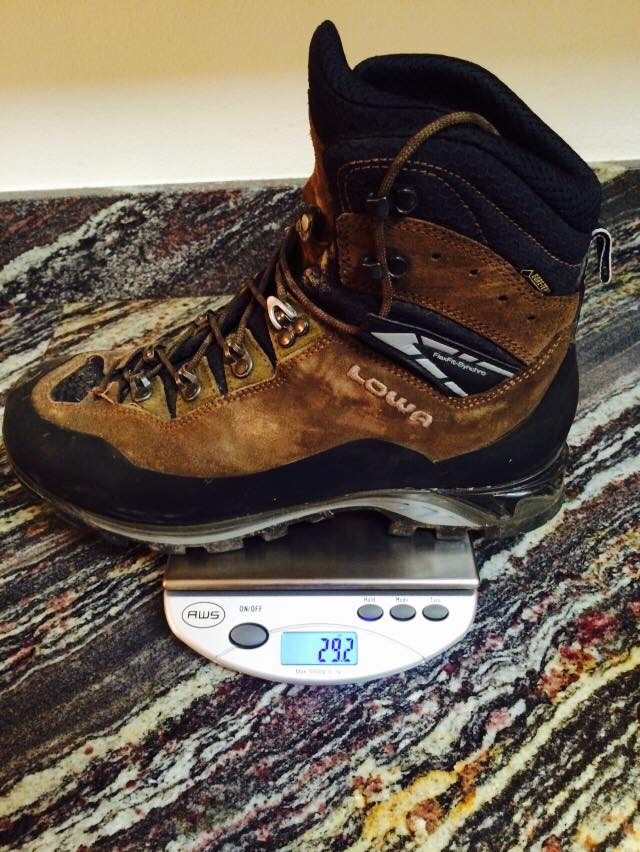
Tech-Lite Hunters are surprisingly light for a boot with enough support for the backpacker
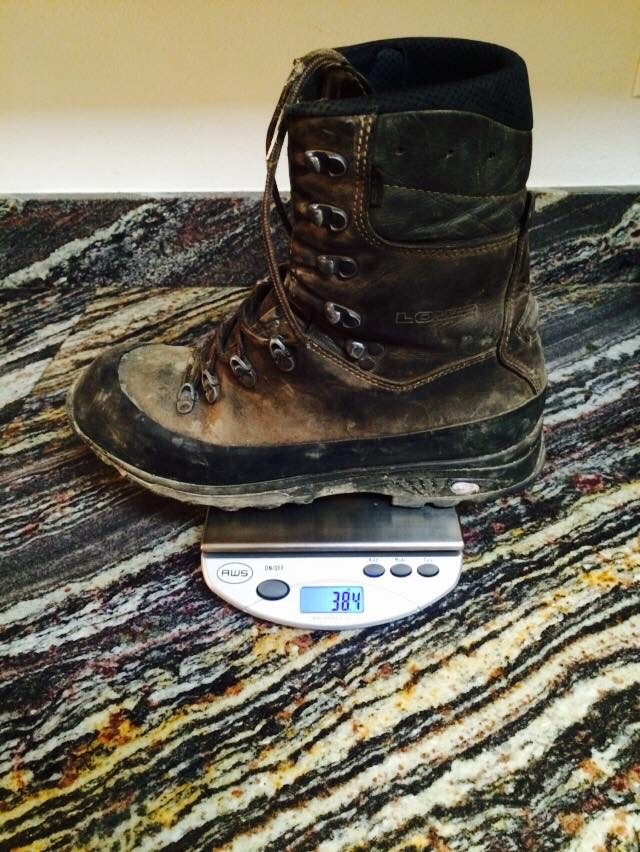
My old workhorse the Hunter GTXs are 30% heavier per pair than my Tech-Lites
That’s well over a half pound that you don’t have to lift with each step while providing superior support and stiffness than the old Hunter GTXs!
I realize that my old Hunter GTXs look a bit tired. But they are actually my second pair and the other pair looked even more worn and have been relegated to lowland moose hunting and such.
What about waterproofness in the Tech-Lites? Generally, I am pretty skeptical of non-full leather boots. I find that full leather boots treated with a good waterproof treatment and the gore-tex liner do pretty well at keeping my feet dry provided I don’t take water over the boot tops. I was skeptical as the Tech-Light Hunter has a mix of leather and microfiber. Because of this I ordered up some G-Max spray from Lathrop & Sons when I placed my order. Thus far a year into using the Tech-Light Hunters on a few hunts and hikes they seem to be holding up just as well as the Hunter GTXs when it comes to keeping my feet dry. The only drawback I notice is that the Tech-Light Hunters are 8.5″ tall and the Hunter GTXs are 10″ tall, which gives me a bit less freeboard to work with when crossing creeks, but using gaiters equalizes this to a large degree.
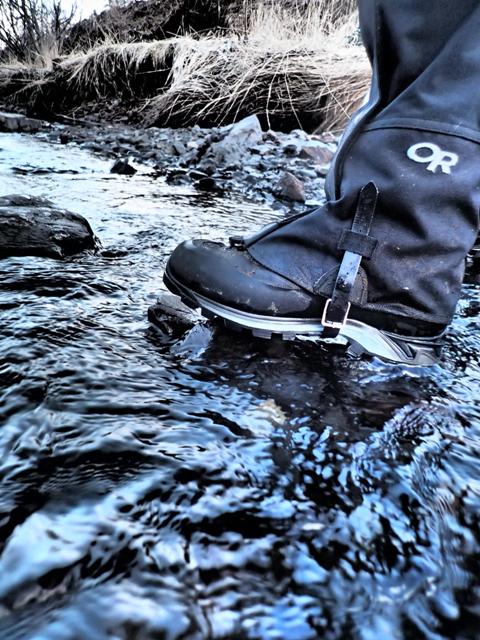
Overall I am very impressed with Lathrop & Sons Tech-Light Hunter. They are my go-to boot now when I need a boot that will provide support on the side of the mountain even with a heavy pack on. The Lowa Hunter GTXs are a great boot, but being more than 30% heavier than the Tech-Light Hunter made the switch an easy choice for me. However, just because a certain boot works great for one person it doesn’t mean they will work for the next guy. If the feature-rich Tech-Lite Hunter boots work for your feet, I don’t think you’ll be disappointed in the performance this lightweight package delivers.
You can discuss this article here (and enter to win a pair of Lathrop & Sons boots)
Use stock pic provided by Lathrop and Sons for Title Pic
It’s no question that finding a boot that works for your feet is vital for the backcountry hunter. Simply said, your feet are your mobility. If you can’t walk due to bad boots you can’t hunt. Thus finding a quality boot that fits your individual feet should be the highest priority for anyone hunting the backcountry.
I have always thought the brand name on the boot isn’t nearly as important as how it fits your feet. So long as your feet agree that is the first and foremost priority. I have used the Lowa Hunter GTX model since 2007, and find that they work very well and agree with my feet. In late 2013, Lathrop & Sons introduced the Lowa Cevedale Tech-Light Hunter. Hoping Lowa had used a used the Hunter GTX as a guide when they designed the Tech-Light Hunters, I bit the bullet and ordered up a pair in the same size. I had high hopes that the Cevedale Tech-light Hunters would provide a little weight savings over my previous boots, while still offering the stiffness and support I would need for hunting mountain goats and Dall sheep.
When the boots arrived in December of 2013 they fit like a glove out of the box and preliminary hiking found no hot spots which was good as I was hoping to take the Tech-Light Hunters on a mountain goat hunt to Kodiak Island in the end of February. Another prerequisite for a pair of mountain hunting boots for me is they must be compatible with a set of instep crampons. Crampons are a must when hunting slippery icy frozen slopes or just slick vegetation, both of which were expected on a winter mountain goat hunt. I have tried 3 different types of crampons with the Tech-Light Hunters, and all seem to fit well when mounted on these boots.
Insert Pic of Boot on mountain top with crampon on
As far as stiffness and support, I found the 5mm thick full shank to give me plenty of support even when side hilling with a load of mountain goat and camp on my back. I have tried full shank boots before that were so stiff that it made for walking long approaches on flat terrain tiresome. The Tech-Light Hunters seem to have a good balance between offering enough support to allow for good purchases with the side of the boot into the mountain while side hilling, but also not fatiguing on longer approaches.
Insert Pic comparing Rands of the Lowa Hunter GTX to the Hunter Tech-Light
Another feature I was glad that Lowa worked into this boot was the fact that they kept a full rubber rand. As you can see in the pic provided the rand isn’t quite as full as what you find on the Hunter GTX model, however it still seems to provide a lot of protection to the front of the boot. Often times boot makers seems to forgo a full rand on lightweight boots to save weight, so the fact that Lowa sacrificed some weight savings in order to provide a more robust boot was great to see.
Obviously the biggest difference for me between the Tech-Light Hunter and Hunter GTX besides the ¾ length shank on the old Hunter GTX and the full shank in the Tech-Light Hunter is the weight difference. I wear a size 10 (US), 9 UK, or 43.5 Euro, and found one Tech-Light Hunter boot to weigh in at 29.2 oz or 58.4 oz (3.65 pounds) per pair. Not bad for a boot that provides the stiffness and support it does. That isn’t that far off the listed weight per pair of 3.5 pounds and can likely be attributed to the fact that the advertised weight of the boot was based on a smaller size.
Insert Pic of Lowa Tech-Light Hunter on Scale
Regardless the old Hunter GTXs I have used previously weigh in at 38.4 oz per boot or 76.8 oz (4.8 pounds) per pair in the same boot size.
Insert Pic of Lowa Hunter GTX on Scale
That’s well over a half pound off your feet that you don’t have to lift with each step while providing superior support and stiffness than the old Hunter GTXs! And yes I realize that my old Hunter GTXs look a bit tired. But they are actually my second pair and the other pair looked even more worn out and have been relegated to low land moose hunting and such.
Waterproofness! Generally, I am pretty skeptical of non-full leather boots. I find that full leather boots or nuckbuck leather boots treated with a good waterproof treatment and the gore-tex liner do pretty well at keeping my feet dry provided I don’t take water over the boot tops. So going with a boot like the Tech-Light Hunter that has a mix of leather and microfiber, I was skeptical as to how well they would keep my feet dry. Because of this I ordered up some G-Max spray from Lathrop & Sons when I placed my order. Thus far a year into using the Tech-Light Hunters on a few hunts and hikes they seem to be holding up just as well as the Hunter GTXs when it comes to keeping my feet dry. The only drawback I notice is that the Tech-Light Hunters are 8.5” tall and the Hunter GTXs are 10” tall, which gives me a bit less freeboard to work with when crossing creeks, but using gaiters equalizes this to a large degree.
Insert Pic of Boots in Gaiters
Overall I am very impressed with the Tech-Light Hunters and they are my go to boot now when I need a boot that will provide support on the side of the mountain even with a heavy pack on. The Lowa Hunter GTXs are a great boot, but being more than 30% heavier than the Tech-Light Hunters make these an easy choice for me. However, just because a certain boot works great for one person it doesn’t mean they will work for the next guy. That said, if these boots work for your feet I don’t think you’ll be disappointed. The Cevedele Tech-Light Hunter is a feature rich boot in a lightweight package.


















